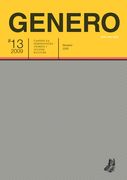Umetnost pokreta u prostoru praznine: tehnologija i praksa virtuelnih karaktera
The Art of Motion in the Space of Void (Technology and Practice of Virtual Characters)
Author(s): Nataša TeofilovićSubject(s): Gender Studies
Published by: Centar za ženske studije & Centar za studije roda i politike, Fakultet političkih nauka, Beograd
Keywords: hybrid art; computer animation; 3D character animation; digital character technology; uncanny valley; digital clones; virtual humans
Summary/Abstract: This essay is conceived as two interrelated parts. The first one is dedicated to the work of art named 1:1, while the second one is a theoretical elaboration on the main theme of the first part -digital character technology. The work of art 1:1 was developed as a 3D ambiance. Through spatial disposition and animation of the protagonists, the work re-examines the perception of virtual creatures and the boundaries between the virtual and the real space. The second part deals with digital character technology. The term “digital character technology” refers to the theory and practice of the creation of digital characters. Digital character is defined as a computer-generated entity with the ability to act, that is, to transmit a specii c human emotion to the observer. Unlike these characters, digital clones represent virtual replicas of real people. Photorealistic portrayal is one of the biggest challenges in the i eld of character animation. However, after the technology made possible the use of realism in computer animation, the appearance of virtual clones has once again raised the problem introduced in the Uncanny Valley theory, developed in 1970s, in the field of robotics. This theory holds that the more humanlike these characters are, in their appearance and motion (animation), the more revulsion they invoke in observers. The author argues that this problem can be eliminated by returning to stylized characters, by trying to produce the more exact human clones, or by applying a different approach. Chris Landreth’s work was used to demonstrate that the characterization can be based on psycho-realism, that is, on the metaphorical expression of human nature.
Journal: Genero: časopis za feminističku teoriju i studije kulture
- Issue Year: 2009
- Issue No: 13
- Page Range: 81-119
- Page Count: 39
- Language: Serbian

